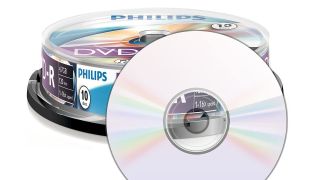Firstly, though, we need to address an elephant in the room. If you’re talking about copying your DVDs of your sister’s wedding video, or film school projects, or anything you’ve shot yourself, then go right ahead. Commercial DVDs, by contrast, are not only protected by copyright laws but also contain on-disk copy protection, and this protects against ripping too. Some jurisdictions allow for this copy protection to be circumvented in order to make a personal backup copy of the media. Others do not. It’s important, therefore, to check your local laws and find out what is and isn’t permissible. For example, while copying a DVD may be perfectly legal where you live, removing its security layer first may not be.
Ripping or copying?
The difference between ripping and copying is a subtle one. Essentially, copying means duplicating the structure of the original disk, bit for bit, either onto a new disk or to an ISO file on your computer hard drive. This disk, or file if mounted as a virtual disk by your operating system, behaves in exactly the same way as the original. Ripping, however, means converting some or all of the data on the disk into a video file you can store on a hard drive, USB stick, or copy to your cellphone or tablet. Usually, this involves a degree of compression, making the resulting video file much smaller than a straight copy of the DVD would have been. It strips out menus, adverts, trailers, and any special features in the DVD extras, concentrating on the main movie content of the disk.
What do you need?
Whether you want to copy or rip, you’re going to need a computer with a DVD drive attached, whether this is an internal drive within the computer’s casing or an external one at the end of a USB cable. It doesn’t matter, both sorts are equally reliable and fast these days. Problem is, many of the best home computers (opens in new tab) no longer come with DVD drives. You can’t just double-click the DVD drive and drag the contents on to your hard drive to copy it. Sadly, it doesn’t work that way. You’re going to need some specialised software, and this is available for download, sometimes free, sometimes for a one-off payment, and sometimes for a yearly subscription. We have a guide to the best DVD rippers (opens in new tab), to help you out. These programs can use a codec (short for encoder-decoder) such as h264 or AVC to compress the video file, leading to a smaller file that’s of the same quality, or only slightly lower, than the original. You’ll also need a destination for the data you’re ripping or copying from the DVD. This can be a hard drive, a USB stick, or another DVD if you’ve got two drives and want to duplicate straight to a DVD-R. You’ll need more storage space if you’re copying, as the lack of compression applies means you’re left with larger files. An individual DVD can hold 4.7GB of data if it’s completely full, but with modern hard drives stretching into the terabytes in terms of capacity, you’ll be able to store a lot of copies before space becomes an issue, even more if you rip the disks and use compression.
What can you do with copied or ripped DVDs?
Copied DVDs are like an archive, they can be mounted as virtual DVD drives on your computer and played that way, and you’ll get a picture every bit as good as if you were playing the original. That’s really all you can do with them, however. It’s possible to rip these ISO files as easily as you can rip the disk it came from, and once you’ve got a ripped video file, no matter where it came from, your options increase. Ripped files are compressed, so are smaller than a copy of the same disk, and this increases their portability. You can copy them to a cellphone or tablet, and play them back on the move. You can transfer them to a USB drive, and make use of the USB ports that appear on satellite receivers and other set-top boxes. You can even stick the USB drive into the USB port on your internet router, creating a rudimentary media server that can stream the movie to any device in your house, provided it’s connected to the router and can run an app such as VLC. Best Blu-ray player software (opens in new tab) | Best DVD player software (opens in new tab) | Best DVD authoring software (opens in new tab) | Best video capture software (opens in new tab) | Best audio converter software (opens in new tab)
